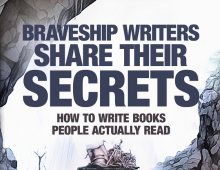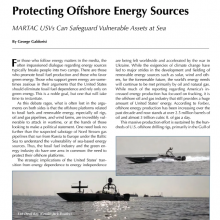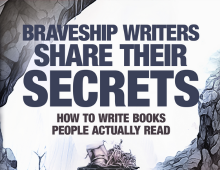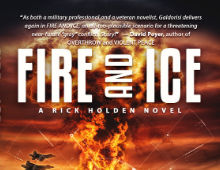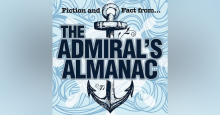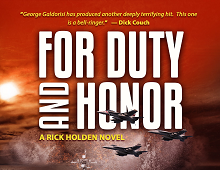George Galdorisi and Kevin McDonald have a great deal in common.
They are both widely published authors, and they previously served in active duty in the U.S. Navy.
And, now they want to help other aspiring writers, as they have co-authored a book about, well, writing a book.
Galdorisi, a Coronado resident, is a career naval aviator who has written 15 books published by mainstream publishers, including his New York Times bestseller, “Tom Clancy Presents: Act of Valor.”
He has a body of work including over 400 articles in national and international media, and is an op-ed contributor to The Coronado News.
McDonald, of Austin, Texas, was commissioned in the U.S. Navy in 1982 and graduated at the top of his flight-school class, spending the next eight years as a naval aviator.
He left the Navy to become a public-safety helicopter pilot in 1992.
He is the author of “Life Inside the Dead Man’s Curve” and “A Nation Interrupted.” Now retired from flying, he continues to write about aviation and history.
Serving in the Military to Co-authoring
The two authors, with separate illustrious bios, actually met during their time in the Navy when Galdorisi was McDonald’s commanding officer at HSL-43 in 1985.
Flash forward 30 years, the two of them recently set out to write “Braveship Writers Share their Secrets: How to Write Books People Actually Read.”
Galdorisi and McDonald in the book pool their knowledge together to share their greatest secrets to becoming a published author.
Before Galdorisi and McDonald spilled their secrets, each of them followed different paths to go from a career in the Navy to a career in writing.
Galdorisi, who moved to Coronado in 1983 and currently works at the Naval Information Warfare Center Pacific, said it was not a distinct line that separated the time he stopped active duty and started writing.
“I was fortunate that during my Navy career I had commanding officers who encouraged me to write for professional publications; so that’s what I did,” Galdorisi said.
Start with what you know
He started with writing what he was interested in, which was the law of the sea.
Galdorisi said that all of the articles he wrote for professional publications prepared him well for writing military thrillers.
McDonald, who initially stepped foot in Coronado when he was stationed on the island during his time in the Navy in 1984, still returns religiously to the island from Austin every summer with his wife to visit old friends, Galdorisi included.
McDonald also wrote articles for professional journals and military magazines when he was in the Navy, but it wasn’t until after he retired from his second career flying EMS helicopters that he started writing books.
Reading Galdorisi’s book, “The Coronado Conspiracy,” McDonald said that was the first time he ever read a novel written by someone he knew.
McDonald was inspired, and decided to write his first book, “Life Inside the Dead Man’s Curve” in 2015.
The two of them decided to collaborate for their newest endeavor, pooling together their experience.
“When George first approached me about doing this project, I was kind of skeptical,” McDonald said. “I didn’t know how this was going to work with the both of us writing this book. And it actually worked out well because the reader gets more than one perspective.”
Despite each of their different writing styles, both authors said that they worked together well.
“It’s a great relationship that gave us the confidence to do the book,” Galdorisi said.
The secret?
So, what’s the secret to writing a book people actually will read?
Both Galdorisi and McDonald presented a few takeaways from the book to provide a small glimpse into the wealth of advice that can be found once the pages are open.
Galdorisi encouraged authors, especially those aspiring to write a full-length book, to actually start by not writing a book, because that is a huge undertaking.
“We recommend writing short stuff first. Write something for your college newsletter; write something for your professional publications,” Galdorisi said. “Then you’ll get feedback from editors and you’ll hone your writing.”
This tactic mirrors the process Galdorisi started his writing career with—completing about 30 articles for professional journals about the law of the sea before he attempted a book on the subject.
Write about what you know
Why?
Because he was passionate about it, which is Galdorisi’s second piece of advice— write about what you know.
McDonald echoed this sentiment.
“If you sit in front of a keyboard and say, ‘I’m going to write the great American novel; I’m going to sell a lot of copies and get rich,’ it could happen, but you’re probably going to be disappointed,” McDonald said. “You have to approach it as something you’re doing because you enjoy it.”
Approaching the writing process as something you enjoy, rather than a purely entrepreneurial exercise will get you farther in the long run, McDonald said.
Oh, and he had one more piece of advice:
“If you want to be a writer and you’re not an avid reader, you’re kidding yourself,” McDonald said.
Learn more about the secret to writing a book by reading Galdorisi and McDonald’s “Braveship Writers Share their Secrets: How to Write Books People Actually Read,” which is available online.
This article was first published in The Coronado News on 30 August 2023 and is republished with the permission of George Galdorisi.


